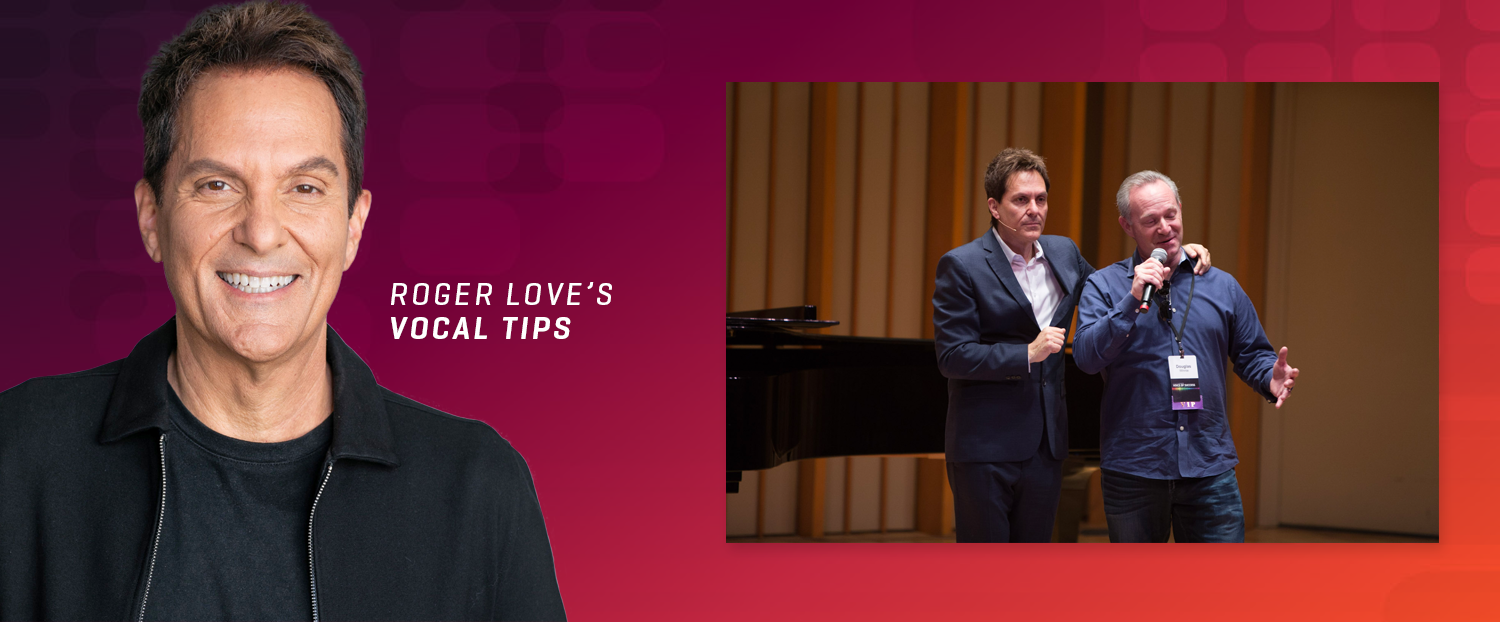Summary
Should you start your speech with a joke?
My answer may surprise you. Find out, in this week’s voice lesson, free for you to enjoy.
Also in that episode, I’ll show you how to discover what
This is a skill set you can apply, starting today, to almost any area of your life, whether you’re speaking on stage, in a conference room, or on the phone.
Did you like this episode?
Please spread the “Love” by sharing this with your friends. Remember, I’m working to save the world one voice at a time, starting with yours. You’re my family now, and we need to work together to extend our mission and reach. The more you share, the more I can share with you, and we can actually help people globally find their voices and change their lives for the better.
Ready for your best life? Find your speaking solutions here.
[apss_share]
Play the Audio of this post:
TRANSCRIPT
Hi, I’m Roger Love, celebrity voice coach and author of the bestselling book Set Your Voice Free. People ask me all the time, should they start their speech with a joke? And I want to answer that question for you right now and make it a part of a bigger-picture answer, so that you really understand how I think humor should be involved in the way that you communicate, in the way that you speak, in the way that you present the best of who you are, the most authentic parts of who you are. So, whether you’re speaking on stage, or you’re talking in a conference room or at work or on the phone, I want you to understand how humor, and more specifically, how your type of humor, should fit or not fit into general communications and presentations.
First of all, I like to try to help people figure out where their earliest parts of funny came from. For example, one of my students was a fifty-something-year-old business person who seemed to always be a little bit off-color, way over the top, shock humor, when he would speak, when he would be in meetings, when he would be onstage, when he would make presentations. His humor was very shocking, sometimes off-color. And I sat down with him, and I said, “I really want to think about where this type of humor, this shock humor, came from.” And after about two minutes, we traced it back to the fact that, when his little sister was born, she was born as an addict, because his mother was taking painkillers for a particular legitimate illness, and when she was pregnant, the baby was born, and it was already addicted to painkillers. So, there was a ton of crying going on when his little sister was born, so he was just a little bit older than that, but he would come up to the crib, and he would try to find any way that he could possibly do something to make his little sister stop crying, to make his little sister laugh. So, he’d make funny faces and funny movements, and he’d make loud sounds, and he would do all this kind of jolt stuff and surprise things, and she would stop crying, and she would laugh at him when he would make all those funny faces. Fast forward. The guy’s fifty years old. He’s talking to everybody, and he’s trying to shock people into laughing. He’s still doing shock, funny-face humor, and not realizing that, in his subconscious, he’s just trying to entertain his little sister, and that that kind of humor was actually making people not think he was funny, not think he was charming, not think that he was authentic.
What are you doing with your humor? Is it working for you? Is it not working for you? I generally am thought of as a very humorous speaker, but never in my entire life, that I can remember, onstage, in conversations, would I tell a joke, to start a speech, to be in the middle of a speech or the end of the speech. I don’t look for jokes to be funny, because I’m not a comedian. I am someone who looks at a particular situation that I am in, that I am witnessing, that I am seeing, that I am experiencing, and I try to find the lighter side of it. I try to look for every situation and look for the happy, look for the humorous, look for the silver lining.
So, when people are talking to me, or when I say something, I’m always trying to put my spin on it that things are not as serious as most people believe. This isn’t the end of the world. This is still a great day, because I got up. People say, “Roger, you seem to always be so happy, so cheerful,” and I say, “Every single morning, I get up with a smile on my face.” And they’re like, “Why? We don’t want to get out of bed. What are you so happy about?” And I said, “Because, when my eyes open, and I realize that I’m breathing, and I get another day to be alive, and there’s my beautiful wife, and then I’m going to see my beautiful kids, and the dog’s going to lick me on the mouth, and she’s a fantastic kisser—this is a great day! I have every reason to be joyful, to be humorous, to think it’s funny, to think that my day is filled with endless possibilities.” So, that’s me. I’m hard-wired like that.
But how are you hard-wired? I’m not trying to tell jokes. If I try to tell a joke onstage, it would bomb, no matter how much the people in the audience loved me. It would be dependent upon how funny the joke itself is. But that’s not where I believe communication humor should come from. I believe our job as a great speaker is to help people go back to the emotional place of the story. So, for example, I’m telling a story about me jumping out of a plane, or I’m telling a story about me driving in a race car and being scared to death, because I’m going two hundred and fifty miles an hour, and I was never trained as a race car driver. My job, when I’m telling this story, is to engage the audience, engage the listeners, and to put them in the same mindset that I’m in while this is happening. That’s how you connect with people. That’s why people tell stories when they’re talking to people. That’s the most engaging person in the world, is the person who can engage you by talking about things that have happened, bringing stories up, and making you feel like you were there.
But how do you feel like you were there? Because you’re seeing the person experience it. So, there I am, jumped out of the plane, and all I can think of is, “Aaah!” And I sing pretty high, but I’ve suddenly hit notes that are higher than my dog could make! And I didn’t even know my vocal cords could make that. So, my job is to put you emotionally back in that place where the story happens.
Now, if you’re feeling like you’re in that place with me, where we’ve just jumped out of the plane, we’re trying to survive, and we’re looking at the positive side—if I get you in that emotional side with me, then if I find the funny in it, and you’re already there connected with me emotionally, you’re going to find the funny in it, too. You’re going to first see it through my eyes, and then you’re going to see it through my heart and my emotions, and then you’re going to feel what I feel. So, the best way to be humorous is to learn how to bring people emotionally with you on how you feel, so that when you feel happy, they feel happy. When you think it’s funny, they think it’s funny. When you think it’s sad, they think it’s sad. You take them through all of these emotions.
What’s the absolute best way to do that? To understand how the building blocks of voice that I teach influence how people feel, and if you can make them feel what you feel. I use melody, specifically melodies that go up. If I want people to feel happy, I use melodies that go from low notes to high notes, “and there I was in the back, and now here I am,” and all of the notes go like that. And when I’m using melodies that go up, which are called ascending melodies, they’re starting lower, and they’re going higher. It makes people happy. If I want someone to be sad, I use a lot of descending. “Oh, it’s my birthday. It’s OK you didn’t get me a present. My name is Roger Love.” The melody of my voice can make people happy or sad. I can go fast or slow, the pace of my voice. “Oh, my God, there I was, and here, this is what happened, and you cannot imagine that.” So, now, my pulse is racing, and you’re following with me, and your pulse starts to race, too, and your blood pressure starts to go up, because I’m speaking faster.
Or I start to speak really slowly, and you start to feel the emotions of patience, the emotions of slowness. Your blood pressure slows. All I’m saying is that, if I use pitch, pace, tone, melody, and volume to help make the sounds of happy and sad and funny and all of the emotions that are possible, then when I am happy, when I see the funny side, it’s because I feel it. I feel how joyful that is. My humor comes from the joy of experiencing something and seeing it in a way that is unique to me waking up on the happy side of the bed. And if I can make the sounds of my voice that make you feel what I’m feeling, then you’ll laugh when I laugh.
People actually say this to me. They’ve never seen this before. I’m onstage, and I’m talking about something, and I start to laugh when they laugh, and people said, “I thought—that’s weird that you laugh at the same time we’re laughing,” and I’m like, “Because I didn’t know what I was going to say, I was so in the moment that my humor came from—I didn’t know I was going to say that.” So, if it’s funny to you, and it’s funny to me, we’re in that moment connected together.
So, should you use a joke? No, not unless you’re a professional comedian. Should you use your voice, the melody, the tone, the pace, the volume of your voice, to connect with people emotionally, so that when you feel it’s funny, they’re already connected to that emotion, so that when you feel it’s happy and joyous and fun, they’re already connected to that, because your voice led them there, and the authenticity and the connection between you and them is humorous and funny? So, don’t look for jokes. Look for transparency. Don’t look for jokes. Look for authenticity. Don’t look for jokes. Display happy. Share happy. The fun will come from that. The funny will come from that.
You are funnier than you think, and you don’t have to try so hard.
<h2 style=”text-align: center;”>Get 4 Free Voice Training Videos That Reveal How You Can Discover Your Perfect Voice</h2>
<p style=”text-align: center; font-size: 14px; line-height: 16px;”>By submitting your email address, you agree to receive emails for this training and special offers. Unsubscribe, anytime.</p>




